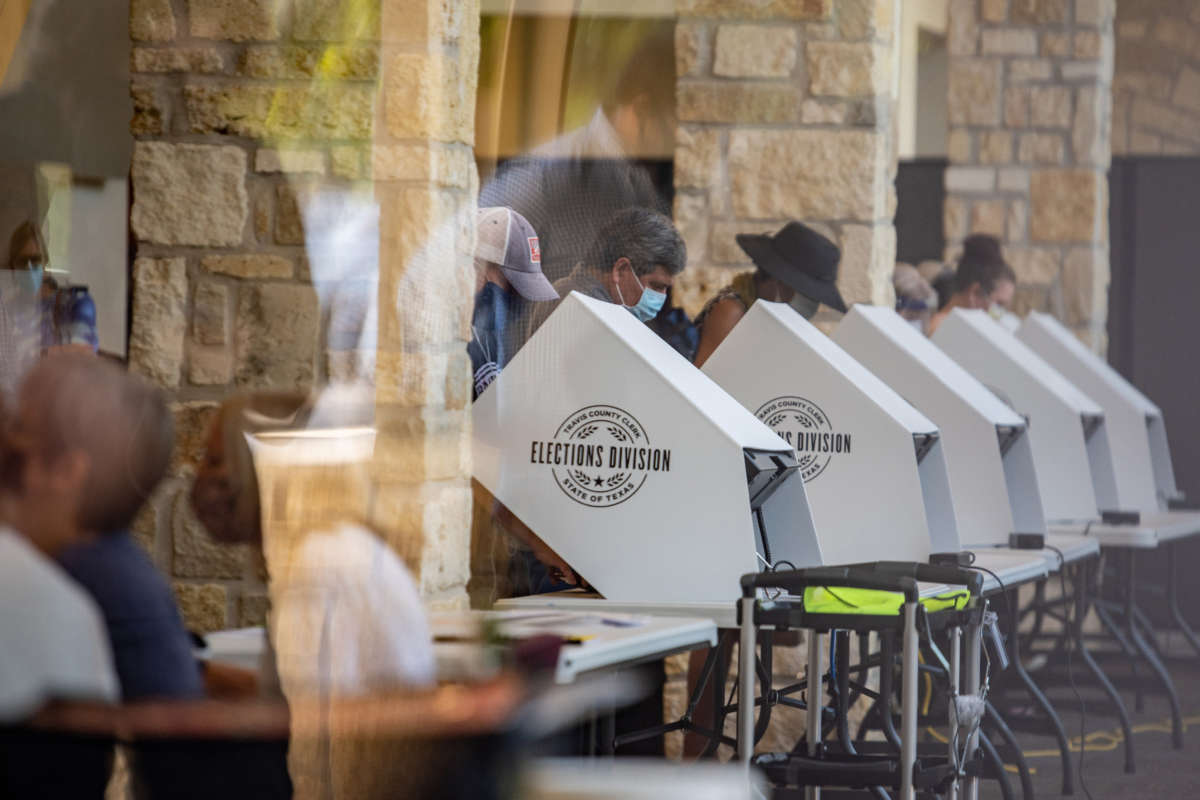With less than a week until Election Day 2020, the path to reelection for President Donald Trump appears to be narrowing, while his Democratic opponent, former Vice President Joe Biden, is expanding into states that candidates from his party haven’t made serious attempts to win in several decades.
The last time a Democratic candidate for president won in Georgia was in 1992, and the last time one was victorious in Texas was in 1976. Yet Biden’s campaign, which initially planned to focus on 17 battleground states back in May, is now considering spending some of its resources to court voters in these two states.
“The resources that we have, have given us an opportunity to continue with an expansive map,” Biden campaign national state director Jen Ridder said to ABC News.
There’s a good reason to make such a brazen move. The states that Biden’s team had focused on winning in the spring — including the ever-important battleground states of Michigan, Pennsylvania, Wisconsin, North Carolina, Arizona and Florida — look likely, if narrowly, to be trending in his favor, come election day. Texas and Georgia, meanwhile, have also shown signs of shifting from their traditionally “red state” statuses to possibly going “blue” this year.
The Cook Political Report, noting several polls that demonstrate this change, placed Texas in the column of “tossup” states this week, a move that most election analysts might have thought improbable at the start of 2020. Cook also considers Georgia to be a tossup state in this year’s race.
Political analyst Amy Walter, writing in a post for the site, noted that the race across the U.S. in general is currently Biden’s to lose, as The Cook Political Report currently says he has probably wrapped up around 290 Electoral College votes. But he has a rare opportunity to win Texas, too.
“Texas is a state that Biden doesn’t need to win, but it is clear that it’s more competitive than ever,” Walter wrote, adding that “recent polling in the state — both public and private — shows a 2-4 point race” between the two candidates, with Trump just slightly ahead in most surveys.
That matches the aggregate of polls collected at RealClearPolitics, which finds Trump leading Biden in Texas by an average of 2.6 percentage points. That lead, however, is within the margin of error for all five polls observed.
In Georgia also, Trump is ahead of Biden within the RealClearPolitics collection of polls, but by a razor-thin margin, leading on average by 0.4 percent.
The numbers for Trump are less encouraging, particularly in states he won in 2016. While he barely eked out a win in both Wisconsin and Michigan, an ABC News/Washington Post poll released this week has Biden leading Trump by 17 points in the Badger State, while showing he’s ahead by 7 points in the Great Lakes State.
Those numbers may be anomalies, some analysts caution, showing a wider split than what voters’ opinions may actually be. Yet, in general, polling in those two states have shown Biden with a growing lead. (A Marquette University Law School poll published on Wednesday showed the Democrat ahead by 5 points in Wisconsin, for instance).
Nationally, many polls show Biden with a significant lead over Trump, with 51 percent of respondents in a recent Economist/YouGov poll saying they intend to vote for the former vice president, and only 40 percent saying they plan to support the incumbent president.
Join us in defending the truth before it’s too late
The future of independent journalism is uncertain, and the consequences of losing it are too grave to ignore. To ensure Truthout remains safe, strong, and free, we need to raise $43,000 in the next 6 days. Every dollar raised goes directly toward the costs of producing news you can trust.
Please give what you can — because by supporting us with a tax-deductible donation, you’re not just preserving a source of news, you’re helping to safeguard what’s left of our democracy.
